Crafting a Winning Cover Letter
A well-crafted cover letter is your first and often most important communication with a journal editor. It serves as your introduction, your elevator pitch, and your opportunity to make a positive impression. It goes beyond a simple formality; it is a strategic tool to persuade the editor that your research is significant, relevant, and worthy of consideration for publication. Ignoring the importance of a cover letter is a missed opportunity. A weak or poorly written letter can lead to rejection, even if your research is excellent. By understanding its purpose and key elements, you can significantly increase your chances of getting your manuscript reviewed and ultimately, published.
Understanding the Purpose of a Cover Letter
The primary purpose of a cover letter for a journal submission is to introduce your research to the editor, explain why your work is a good fit for the journal, and persuade the editor to send your manuscript for peer review. The cover letter isn’t just a formality; it’s a chance to make a strong first impression. It provides context for your research, highlighting its significance, originality, and relevance to the journal’s readership. It also allows you to address any specific requirements or recommendations from the journal. This is also your chance to emphasize your familiarity with the journal, demonstrating that you have chosen it thoughtfully and strategically, and that you have considered the audience.
Key Elements of a Cover Letter
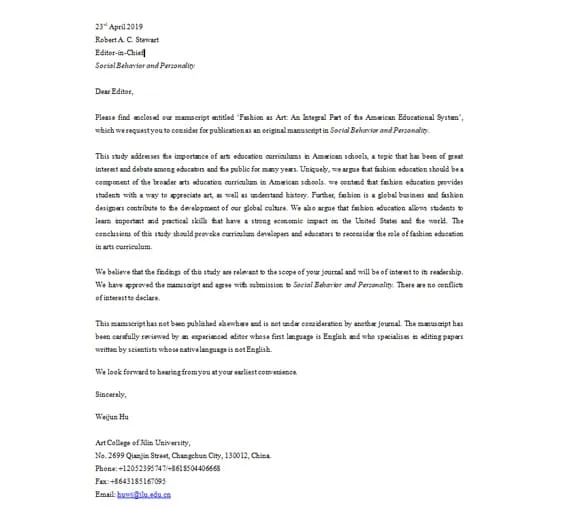
A winning cover letter includes several key elements. Start by clearly identifying the manuscript’s title, the authors, and the journal you’re submitting to. Briefly state the study’s main findings and their significance. Highlight how the work aligns with the journal’s scope and aims. Indicate that the manuscript is original and not under consideration elsewhere. Clearly state your purpose, whether it is to submit the original manuscript or a revised version. Conclude with your contact information, a professional closing, and your signature (if submitting by mail). Each of these elements works in harmony to present a cohesive picture of your research and its suitability for the journal.
Identifying the Right Journal
Before you start writing your cover letter, select the right journal for your research. Consider the journal’s scope, audience, and impact factor. Read recent articles to understand the types of studies it publishes and the style of writing preferred by the journal. Match the topic of your research and the scope of the journal. Check the author guidelines to ensure your manuscript meets the formatting and submission requirements. A well-chosen journal will not only increase the chances of acceptance but also ensure your research reaches the appropriate audience. Researching the journal beforehand demonstrates your understanding of the journal and helps tailor your letter to the specific editor.
Formatting Your Cover Letter
Your cover letter should be formatted professionally. Use a standard business letter format, including your contact information, the date, and the editor’s name and address. Keep it concise, ideally one page, as editors are busy. Use clear, concise language and avoid jargon unless necessary. Use a readable font and appropriate font size (e.g., Times New Roman, 12-point). Proofread carefully for any grammatical errors or typos. The format of your letter reflects professionalism. Formatting the letter properly, and ensuring its clarity, enhances the overall impression you make on the editor.
Writing a Compelling Introduction

Your introduction should immediately grab the editor’s attention. Start by clearly stating the purpose of the letter and the title of your manuscript. Briefly mention the key findings or main contribution of your research and why they are significant. This will give the editor a quick snapshot of the research and will immediately engage the reader. Show your enthusiasm for the research and the journal. Expressing a genuine interest in publishing in the journal’s audience shows you’ve done your homework and that you’re excited about the publication. Make sure the introduction highlights the novelty or uniqueness of your work.
Highlighting Your Research
In the body of your letter, provide more details about your research. Briefly summarize the study’s methods, key results, and conclusions. Highlight the main points of your research without repeating the abstract. Explain how your study addresses an important gap in the current literature, and what specific contribution it makes to the field. Use clear, straightforward language and avoid unnecessary technical jargon. Focus on the impact of your work, and how it relates to the journal’s scope. When you highlight these points, the editor immediately understands what your research is about and why they should publish it.
Emphasizing Significance and Novelty
One of the most crucial aspects of your cover letter is to emphasize the significance and novelty of your work. Explain why your research matters and what new insights it provides. Highlight the importance of the findings, their potential implications, and how they advance existing knowledge. Clearly articulate the originality of your research; what new questions does it address, or how does it challenge or extend previous work? Make it clear how your research contributes to the advancement of the field and how it provides valuable information to the target audience. When you clearly articulate the value of your work, you increase the chances of the editor valuing your submission.
Stating the Purpose of Submission
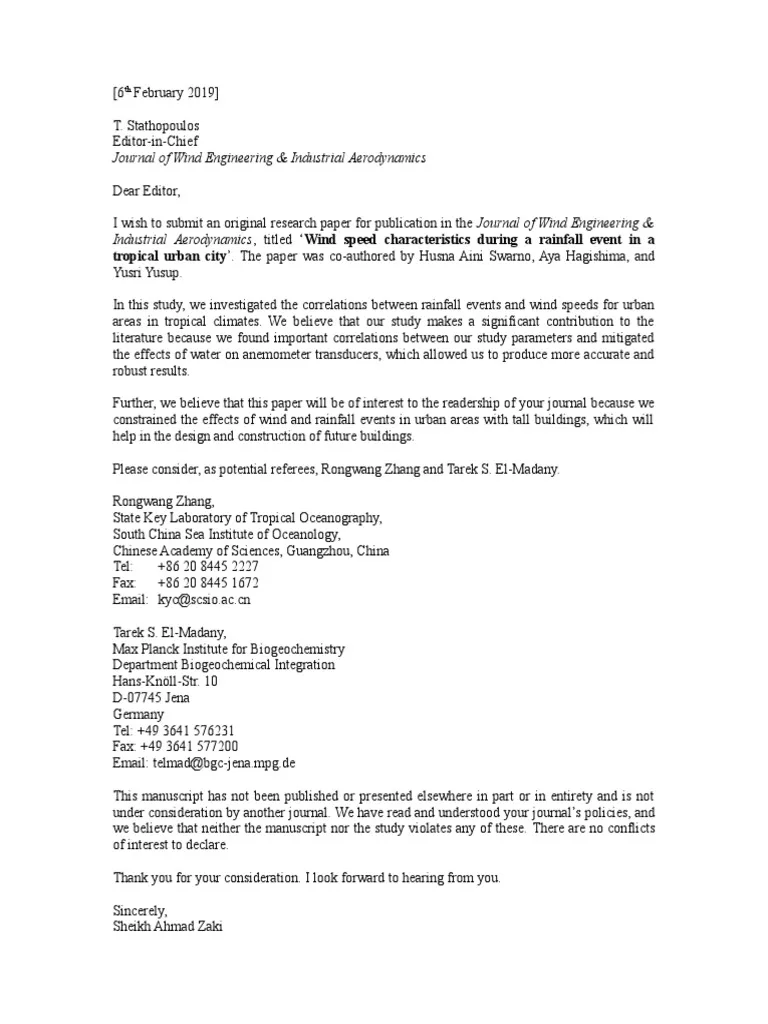
Clearly state that you are submitting your manuscript for consideration for publication in the journal. Specifically, mention the type of submission (e.g., original research article, review, case study) and the target journal. If you are submitting a revised manuscript, explain the changes you have made in response to previous comments. If you are submitting a revised manuscript, you can also summarize your responses to the reviewers’ suggestions, highlighting the key changes. Clearly stating your purpose confirms to the editor what you intend. This clarity helps the editor quickly understand the intent of the submission.
Mentioning Co-authors and Their Contributions
If your manuscript has co-authors, briefly acknowledge their contributions. State the role of each author and mention their specific responsibilities during the research and the writing process. This helps to clarify the authorship and also shows the editor that there was a collaborative effort. Ensure all the authors agree to submit the manuscript to the journal. If the journal has specific guidelines on authorship, make sure your letter adheres to these guidelines. The editor will also understand who was involved in the research and who should be contacted if needed.
Creating a Strong Body
The body of your cover letter should expand on the key points from the introduction. Briefly summarize the study’s purpose, methods, and key findings. Highlight the research’s significance and its relevance to the journal’s scope. Tailor your language to the journal’s specific audience and mission. Include specific reasons why the journal is the best place to publish your work. A strong body provides a detailed overview of your work and gives context to your submission, helping the editor fully understand the importance of your research.
Aligning with the Journal’s Scope and Instructions
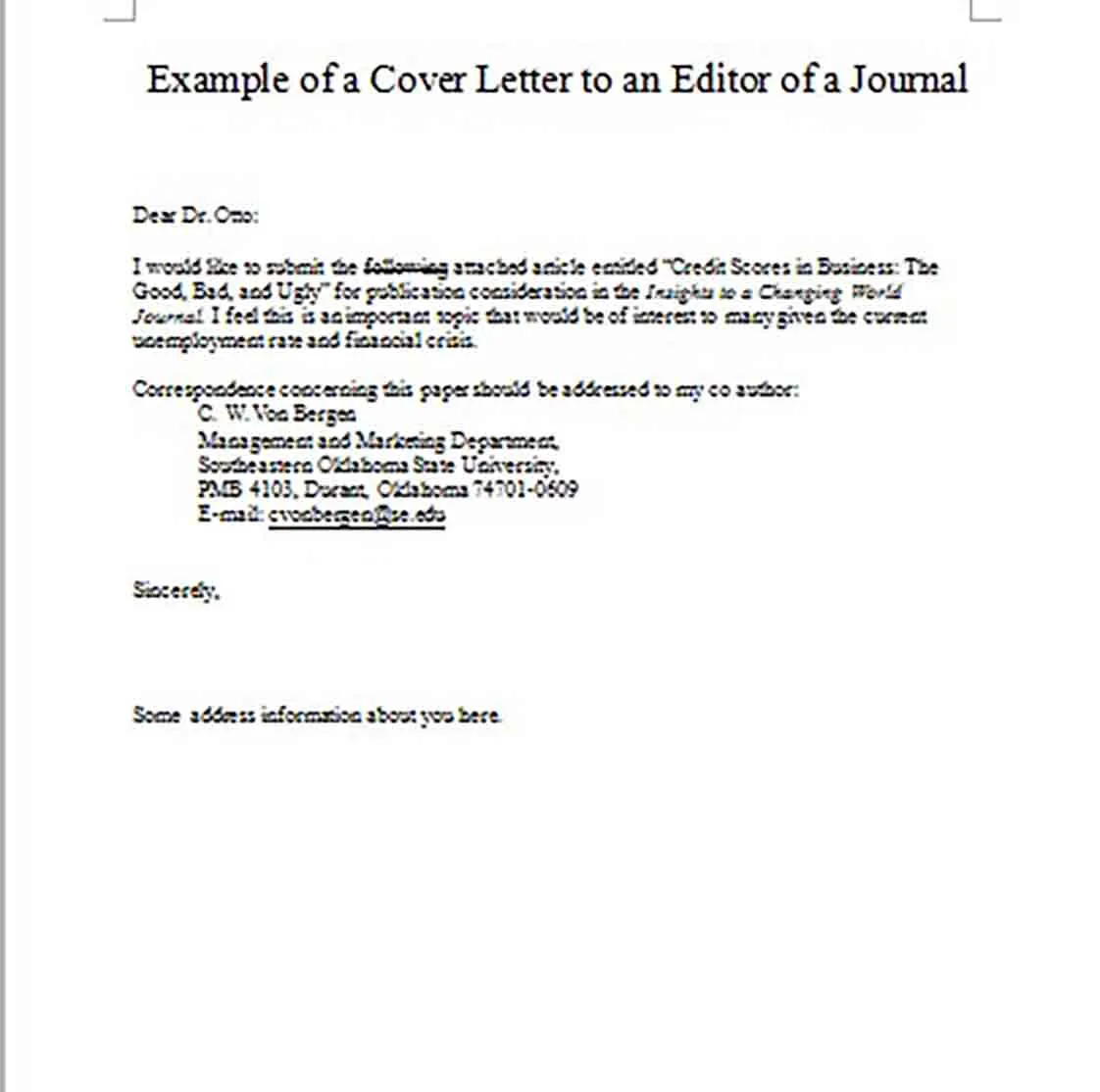
Carefully review the journal’s aims and scope to ensure your research aligns with their focus. Mention how your work fits within the journal’s areas of interest, and the target audience of the journal. Adhere strictly to the journal’s guidelines for authors, including formatting, word count, and reference style. If your manuscript does not align with the journal’s scope or instructions, it is likely to be rejected. Showing the editor that you have carefully considered the journal and followed its instructions increases the likelihood of acceptance. A letter that accurately represents your work and the journal will ensure that your submission will be taken seriously.
Referring to Supporting Documents
Clearly indicate all the supporting documents submitted with your manuscript, such as the main manuscript, supplementary files, and any additional information required by the journal. List each document separately and indicate its file name and format. Ensure that all the supporting documents are included, and that they follow the guidelines of the journal. Reference the supporting documents so that the editor can find all the materials necessary to review your submission. It is also important to check that all files were correctly uploaded to the journal’s submission portal.
Addressing Potential Conflicts of Interest
Disclose any potential conflicts of interest. Explain any financial, professional, or personal relationships that might influence the research or its interpretation. Disclosing conflicts is crucial for maintaining transparency and scientific integrity. If you have nothing to disclose, explicitly state this in your cover letter. Transparency and ethical conduct is a part of publishing, and this transparency is what builds trust within the scientific community. It shows the editor that you and your co-authors are committed to ethical practices.
Expressing Gratitude and Professionalism
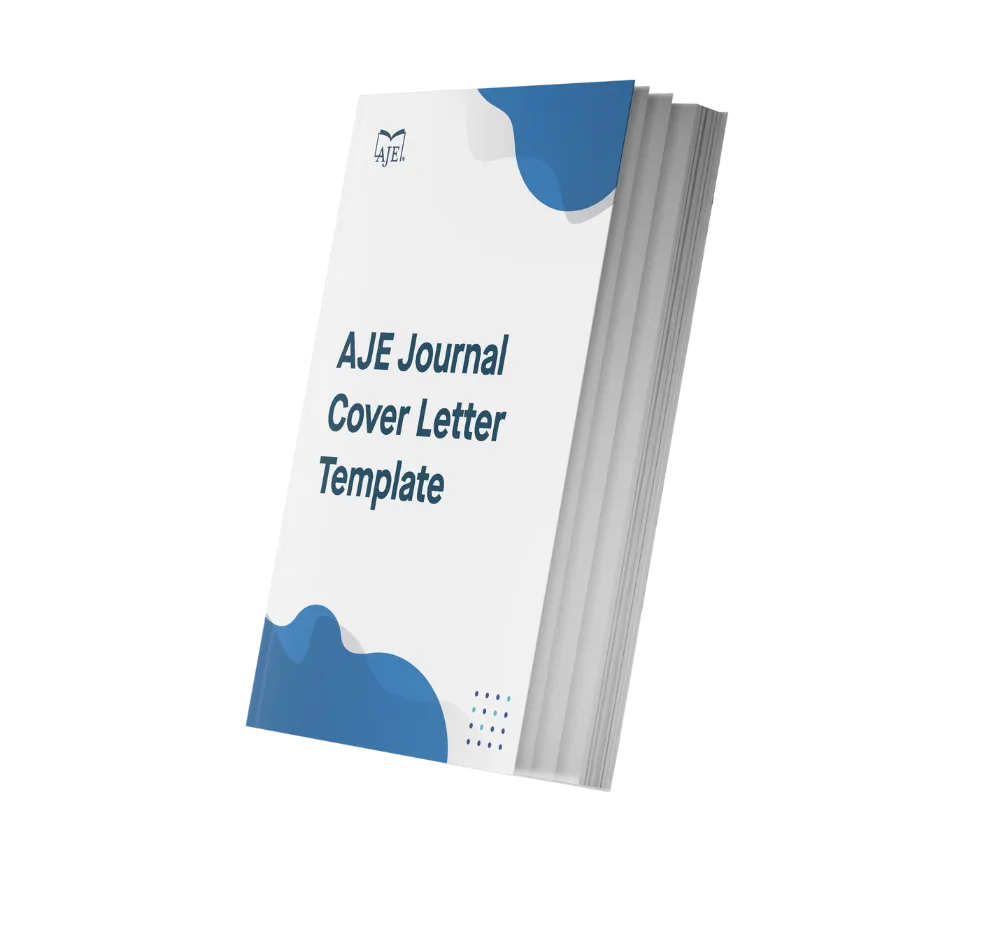
End your cover letter with a professional closing. Thank the editor for their time and consideration. Indicate your willingness to answer any questions or provide additional information. Provide your contact information (email address and phone number) for easy communication. Reiterate your enthusiasm for your research and the possibility of publishing in the journal. A professional and appreciative closing enhances your overall image and increases the chances of a positive response. It reflects positively on your professionalism and makes you appear friendly, increasing the odds of your work being accepted.
Proofreading and Editing Your Letter
Thoroughly proofread your cover letter for any errors in grammar, spelling, or punctuation. Check for inconsistencies in formatting or style. Use a grammar checker and spell checker as a first step, but always review the letter yourself. Have a colleague or friend review your cover letter. A second pair of eyes can catch mistakes that you may have missed. A flawless cover letter is essential to present yourself professionally. A polished letter demonstrates attention to detail and respect for the journal. Ensure that the letter does not have any mistakes, which can negatively impact your chances of publication.
Ensuring Clarity and Conciseness
Write in clear, concise language. Avoid overly complex sentences or jargon. Keep your language straightforward and easy to understand. Use active voice whenever possible to make your writing more direct and engaging. Aim for a tone that is both professional and enthusiastic about your research. Clarity is essential in your cover letter to ensure the editor understands your message quickly and efficiently. A clear, concise cover letter will increase the chances that the editor will read and value the submission. Simplify your letter to make the message easy to digest.
Formatting and Submission Guidelines
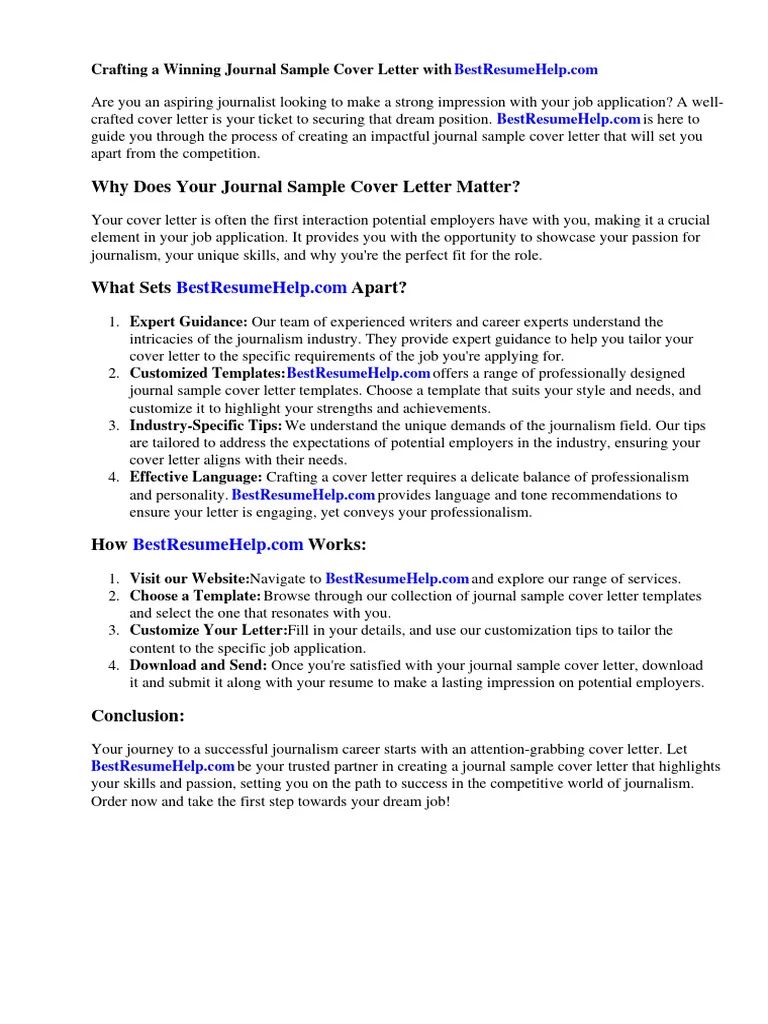
Before submitting your cover letter and manuscript, familiarize yourself with the journal’s submission guidelines. Review the journal’s formatting requirements, word count limits, and referencing style. Prepare your cover letter according to the specific instructions provided by the journal. Make sure to follow the submission portal’s guidelines and submit the cover letter and manuscript in the required format. Adhering to the journal’s guidelines demonstrates your attention to detail and respect for their process. Failure to follow these instructions might lead to rejection. Always make sure the letter is ready for submission.
